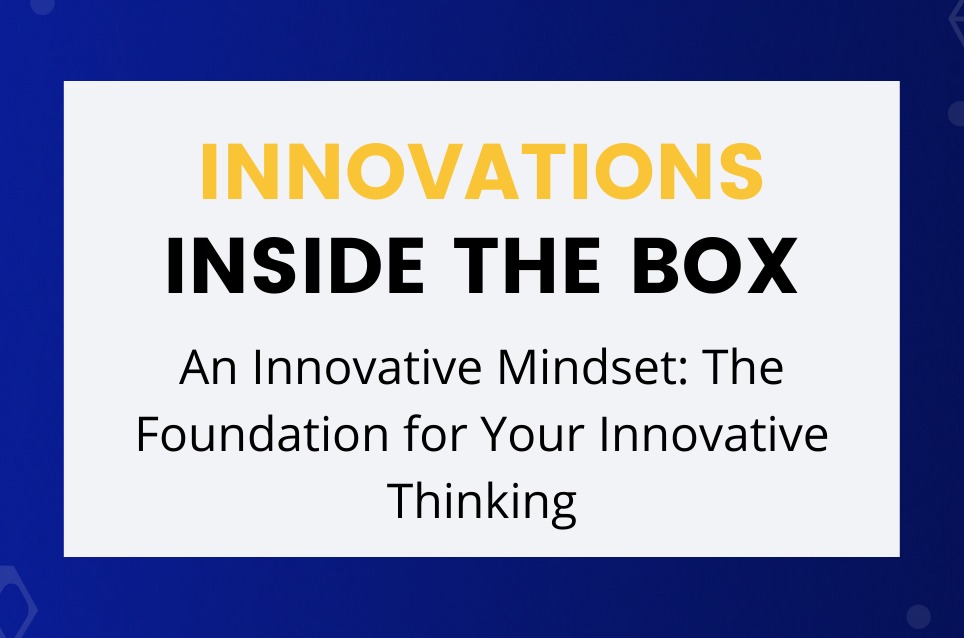By John Sweeney & Elena Imaretska
One of the most common excuses we hear from folks who are reluctant to embrace innovative thinking is that they “are not creative” or not “right-brain thinkers.” We like to gently remind them that the ability to think innovatively is in fact a learned skill, and can be improved with rigorous practice. In fact the old myth of right-brain versus left-brain predominance is incorrect. New technology is allowing researchers to begin to identify the brain processes and structures that are involved in creativity: While there are still many unknowns, evidence points to it as a combination of several cognitive processes instead of just one. Additionally, according to neuropsychologist Rex Jung and his team these processes don’t rely on a specific region of the brain but rather brain networks and hubs, which are engaged at different times and for different purposes. Cognitive processes, both analytical and creative, depend on the neural networks of the brain and use the whole brain, not just one part of it, as shown by a team of researchers from University of Utah.
The reason why innovative thinking could feel foreign or perhaps uncomfortable to some is because they are not used to using the neural networks that fuel it. The brain networks necessary for creativity are different from those needed for intelligence. As Jung pointed out in an interview, intelligence requires strong and direct neural connections between networks, which provide fast information processing. Creativity, on the other hand, requires looser neural connections, which allow the brain to meander, helping us link unexpected ideas and concepts.
The fact is, if most of the time you rely on your intelligence and ability to recall or file information quickly, break down problems, and solve them as quickly as possible based on prior experience, it’s no surprise that when you are in the innovation trenches, your biggest foe can be a mindset that focuses us on what is known and comfortable.
We’re all familiar with the learning pyramid model of tool sets, skillsets, and mindsets—with the last element being what everything else rests on top of. The proper mindset allows us to use the skills that we have developed and the tools that we are afforded in the specific ways we need them to accomplish tasks. This is especially true of innovative thinking – there are so many wonderful techniques and tools that can be so effective in guiding, shaking up, or transforming our thinking. Unfortunately, if we are not grounded in the right mindset, those tools and techniques may not work as quickly or as effectively.
We were recently catching up with a client of ours, who is an expert in design thinking and uses the methodology the Stanford d.school (Institute of Design) has developed on a daily basis to innovate around various problems. He was sharing his experience of facilitating a two-day innovation work session, which engaged a large group of key stakeholders around a hot-button issue. Although the process and tools the group was using were superb, the team wasted a whole day before they began to generate worthwhile work. They were not in a mindset conducive to innovative thinking – each stakeholder was holding on to their own agenda, and not truly listening to their teammates, not deferring judgment on possible solutions, and not able to reframe information from different points of view.
As you practice innovative thinking, it’s essential to first ground yourself in a mindset that fuels it. In the 50+ years our organization has been involved in innovation activities, and particularly in the past 15 years of working with businesses, we have found that an innovative mindset, or as we call it a mindset of discovery, awards powerful assumptions. When you are in the mindset of discovery you believe that:
- Mistakes are a great source of inspiration and learning.
- Change is fuel—not an obstacle.
- Ideas and honest opinions have value that we should celebrate, not judge.
- We all have the power to create change and impact those around us.
- We don’t need all the information just to begin.
You might wonder, but how do I ground myself in a mindset of discovery?
As psychologist and researcher Carol Dweck brilliantly points out in her book, Mindset: The New Psychology of Success: “Mindsets are just beliefs. They are powerful beliefs, but they’re just something in your mind, and you can change your mind.” That’s true, you can change your mind, and you can challenge yourself to be intentional about where you focus your attention and what lens you use to process information.
However, it is not easy to simply rely on intention. Research on habits shows that strong habits (or activities we perform at least once a week), do not respond to people only deciding to act or think differently. Having a strong motivation and a goal in mind is important, however, you also need to create a detailed plan of how you will behave in various situations. With that in mind we recommend adhering to five, simple behaviors, which can help you ground yourself in the mindset of discovery.
Those simple yet mighty behaviors—which we call the Big Five—are:
- Listen: Be present, open, and aware.
- Defer Judgment: Pause and accept the potential of ideas, opinions, and circumstances.
- Declare: Be authentic and clear, speak your mind.
- Reframe: Use what you have to move forward.
- Jump in: Develop a bias toward action, avoid analysis paralysis.
If you want to shift your mindset in order to aid your innovative thinking, simply act in accordance with the Big Five, and you will be surprised how much faster and easier it will be for you to maximize the innovative thinking techniques and tools you are utilizing. By practicing, you are exercising your brain networks involved in innovative thinking and strengthening the neural connections that matter. Build a strong foundation for your innovative thinking and relish the results.





